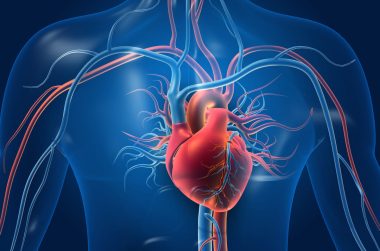Looking for Expert-Level VA Claim Answers?📱Call Us Now! 737-295-2226
Struggling to catch your breath after simple tasks like walking across the room? That could be more than just aging; it could be a sign of heart disease tied to your military service.
A VA rating for heart disease can unlock monthly compensation up to 100%, but only if you meet the right criteria.
Do you qualify?
Let’s dig in.
Table of Contents
Summary of Key Points
- VA Ratings for Heart Disease: The VA rates heart disease at 10%, 30%, 60%, or 100%, based on symptoms, workload capacity (measured in METs), and test results like ejection fraction or imaging studies.
- How Ratings Affect You: Your heart disease VA rating directly impacts how much monthly compensation you receive, reflecting the severity of your condition and its effect on your daily life.
- Eligibility Requirements: To get VA disability benefits for heart disease, you’ll need a current diagnosis, evidence of a service-related cause, and a medical nexus linking the condition to your time in the military.
What Causes Heart Disease in Veterans?

Heart disease is a general term for several cardiovascular conditions that often share similar symptoms and traits.
About 1 in 4 veterans age 60 and older has been diagnosed with heart disease, according to a 2024 study on cardiovascular disease, which includes conditions like coronary artery disease, heart attacks, and strokes.
Heart disease in veterans can be caused by several factors linked to their service, including:
- Stress and Exposure: Combat stress and exposure to toxins like Agent Orange raise heart disease risk.
- Injuries: Physical injuries sustained during service can contribute to heart problems later in life.
- Lifestyle: Factors, including smoking, poor diet, and inactivity, sometimes develop during or after service.
- Other Conditions: Service-connected issues like PTSD or hypertension can lead to heart disease.
Top Heart Conditions Rated by the VA
The VA rates many heart conditions, but these are the most common:
- Coronary Artery Disease (CAD)/Ischemic Heart Disease: Narrowed heart arteries causing chest pain and fatigue.
- Hypertension: A vascular condition that involves high blood pressure that can lead to strokes and heart attacks.
- Heart Arrhythmia: Irregular heartbeats that may require a pacemaker.
- Cardiomyopathy: Weakening of the heart muscle, leading to heart failure.
- Aortic Stenosis: Narrowing of the aortic valve, often needing surgery.
- Congestive Heart Failure: When the heart can’t pump enough blood, it causes swelling and breathlessness.
How the VA Rates Heart Disease
The VA uses 38 CFR § 4.104 to rate heart conditions under the Cardiovascular System Schedule.
Heart Disease VA Ratings
Heart conditions are rated at 10%, 30%, 60%, or 100%, depending on symptom severity.
Ratings are mainly based on METs testing (metabolic equivalents), which measures how much energy your heart uses during activity and when symptoms begin.
- 100% VA Rating Criteria: Workload of 3.0 METs or less results in heart failure symptoms
- 60% VA Rating Criteria: Workload of 3.1-5.0 METs results in heart failure symptoms
- 30% VA Rating Criteria: Workload of 5.1-7.0 METs results in heart failure symptoms; or evidence of cardiac hypertrophy or dilatation confirmed by echocardiogram or equivalent (e.g., multigated acquisition scan or magnetic resonance imaging)
- 10% VA Rating Criteria: Workload of 7.1-10.0 METs results in heart failure symptoms; or continuous medication required for control
Understanding METs
METs show how much your heart can handle before symptoms start. The less it can handle, the more serious the VA considers your heart condition to be.
- 1-3 METs: This is very limited activity, like getting dressed, showering, or eating. If you experience symptoms while performing these basic tasks, the VA may assign a 100% disability rating. That means your heart function is severely limited.
- >3 to 5 METs: This includes light activities like walking slowly on level ground, washing dishes, or making the bed. If these cause heart-related symptoms, the VA may assign a 60% rating.
- >5 to 7 METs: This covers moderate activity like walking at a brisk pace, light yard work, or climbing a flight of stairs. If you have symptoms during these, or if medical tests show your heart is enlarged (cardiac hypertrophy or dilatation), the VA may assign a 30% rating.
- >7 to 10 METs: This includes more strenuous activity, like jogging, biking, or heavy yard work. If symptoms only show up at this level, or if you take daily medication for heart disease, the VA may assign a 10% rating.
Bottom Line: The lower your METs number, the less physical activity your heart can handle, and the higher your VA rating may be.
Related Post: What is the METs Test for VA Disability?
VA Rating for Heart Surgery
If you’ve had heart surgery due to a service-connected condition, the VA typically assigns a temporary 100% disability rating for recovery.
This rating usually lasts for three months following hospital discharge or surgery, such as a coronary bypass, heart valve replacement, but only one month after pacemaker or ICD implantation.
After the temporary period, the VA re-evaluates your condition based on your current symptoms, diagnostic test results, and overall heart function.
If you continue to experience limited physical capacity or ongoing complications, you may still qualify for a high long-term rating.
How to Receive a VA Disability Rating for Heart Disease
To qualify for a VA rating for heart disease, you’ll need the following:
- A current diagnosis
- An in-service event, injury, aggravation, or illness
- A medical nexus (link) between the current diagnosis and the in-service event, injury, aggravation, or illness.
Pro Tip: The fastest way to apply for VA disability is online at VA.gov. However, you can also download and complete VA Form 21-526EZ and apply by mail, fax, or in person at a VA regional office.
VA-Recognized Presumptive Heart Conditions
Some heart diseases are presumed by the VA to be service-connected for certain veterans. This means you don’t have to prove the connection yourself.
Presumptive heart conditions include:
- Ischemic heart disease
- AL Amyloidosis
- Beriberi Heart Disease
- Heart disease or hypertensive vascular disease
- Hypertension
For example, you may qualify for a hypertensive heart disease VA rating if you’re a Former Prisoner of War (POW) and your condition is rated at least 10% disabling.
Related Post: 5 VA Presumptive Heart Conditions
VA C&P Exam for Heart Disease

Your Compensation & Pension (C&P) exam is a key step in your VA claim. It helps determine how severe your heart condition is and how it affects your daily life.
During your C&P exam, the examiner will review your military records and past treatments for heart disease and do a physical exam to check your heart and listen for irregular rhythms.
You may need tests like an ECG, stress test, or echocardiogram to show how well your heart works.
C&P exams might feel intimidating, but they’re your chance to show how your heart condition affects your daily life.
Related Post: VA C&P Exam for Heart Conditions
Heart Disease and TDIU
If your heart condition prevents you from securing and maintaining substantially gainful employment, you may qualify for Total Disability based on Individual Unemployability (TDIU).
TDIU allows you to receive VA compensation at the 100% disability rate, even if your combined rating is below 100%
To qualify for TDIU, one of these must be true:
- You have at least 1 service-connected disability rated at 60% or more disabling, or
- You have 2 or more service-connected disabilities, with at least 1 rated at 40% or more disabling and a combined rating of 70% or more
Note: The VA defines substantially gainful employment as competitive work that pays above the federal poverty level and is comparable to what nondisabled workers earn in the same job locally. Marginal jobs or sheltered work environments generally don’t count against TDIU eligibility.
Related Post: VA Individual Unemployability Fact Sheet
Want Expert-Level Support for Your VA Disability Claim? WE GOT YOUR SIX!

- VA Claims Insider is the #1 most trusted name in VA disability claims.
- Work directly with a VA claims coach who can educate you through the claims process.
- 25,000+ disabled veterans have served in our membership programs since 2016.
- 30% average rating increase for veterans who complete our #1-rated Elite program.
- 4.7/5.0 average rating out of 5,500+ total reviews; over 4,500 5-star reviews.
FAQs | Frequently Asked Questions
What is the VA rating for heart disease?
The VA rates heart disease based on how much it affects your heart’s ability to function, particularly during physical activity. Ratings can be 10%, 30%, 60%, or 100%, depending on the severity of your condition and its impact on your daily life.
What is the VA rating for ischemic heart disease?
The VA ischemic heart disease rating schedule assigns ratings of 10%, 30%, 60%, or 100%, depending on how much the condition limits your heart function. For example, your VA rating for ischemic heart disease will depend on how severely the condition affects your heart’s ability to function, especially during physical activity, as measured by METs testing and other medical evidence.
What is the VA rating for coronary heart disease?
The VA rates coronary heart disease under the same criteria as ischemic heart disease, using the General Rating Formula for Heart Conditions. Ratings can be 10%, 30%, 60%, or 100%, depending on how much the disease limits your heart’s ability to function, especially during physical activity.
What conditions are secondary to heart disease?
Several conditions may develop because of service-connected heart disease, including kidney disease, stroke, peripheral artery disease, lung issues, sleep apnea, and mental health conditions like depression or anxiety. If you’re filing a secondary claim, you’ll need medical evidence (e.g., a nexus letter) showing how your heart disease caused or worsened the secondary condition.
Author

Kelly Olone
Kelly Olone is a military spouse who earned her degree in Psychology from Florida International University. After working in the non-profit sector for several years, she turned to her passion for writing. She aims to contribute to a better understanding of the valuable benefits that veterans deserve. As a mom, Kelly navigates the delicate balance between deadlines and bedtime stories with finesse.



